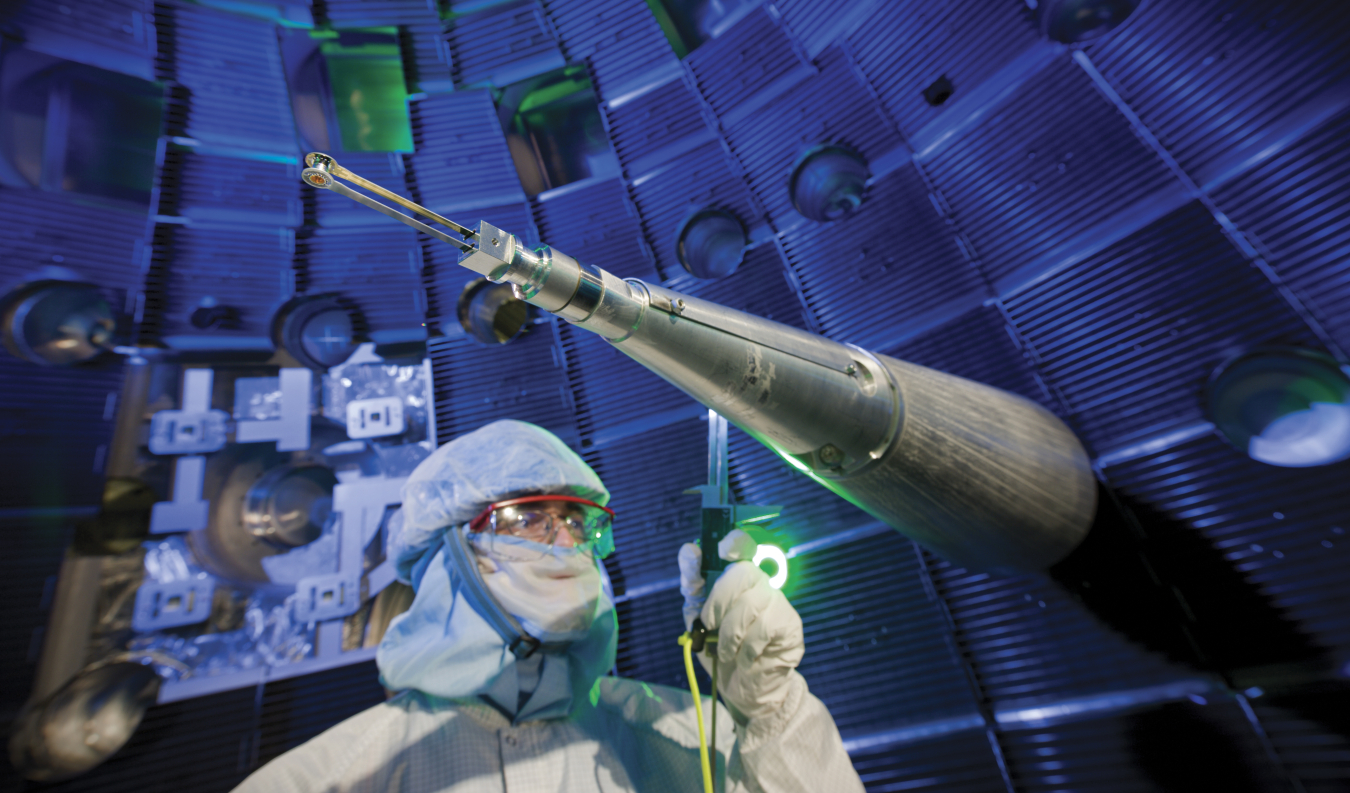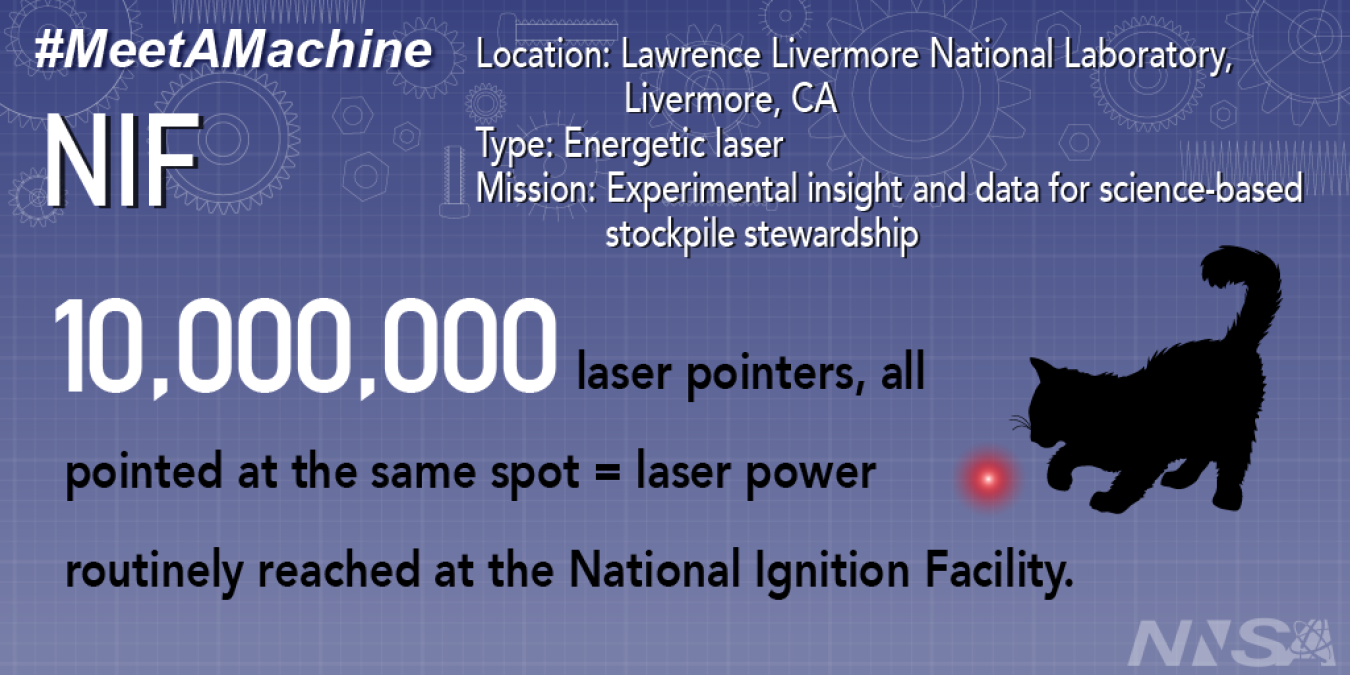

You wouldn’t want to be caught at the center of the sun. Likewise, you wouldn’t want to be caught in the path of the National Ignition Facility’s (NIF) 192 laser beams either. In a laboratory setting, NIF creates the kind of extreme pressures and conditions found in nuclear detonations, the atmospheres of gas giants, and stars.
How does it work?
NIF works on the same principles of a standard laser pointer. What makes it special is that each person in the world would need 10 million laser pointers, and they would all need to be pointed to the same spot to reach the laser powers routinely reached at NIF. A weak laser pulse—about 1 billionth of a joule—is created and amplified a quadrillion times. The beams go through a system that increases the pulses’ energy 10 billion times, before zooming through boosting amplifiers to bump the power to 4 million joules that can be delivered in a few billionths of a second. The 192 beams are aimed at a hollow, spherical high-density carbon capsule about the size of a small pea.
All that laser power creates X-rays that compress the capsule to temperatures of 100 million degrees Celsius (6 times hotter than the center of the sun!) and pressures 200 billion times that of the Earth’s atmosphere—conditions similar to those found in detonating nuclear weapons.
Here’s another way to think of the amount of pressure created at NIF. Imagine being trapped underneath a single elephant. Then imagine 2,000 more elephants stacked up on top of that first one, 4 miles high! Then consider all those elephants balancing on the head of a pin. The pressure at the bottom of the pin would be comparable to the pressure created in NIF’s most extreme experiments.
From start to finish, a NIF shot takes only about 5 microseconds.
NIF experimental data are used to validate three-dimensional weapon simulations designed to ensure our nuclear deterrent remains safe, secure, and effective.
